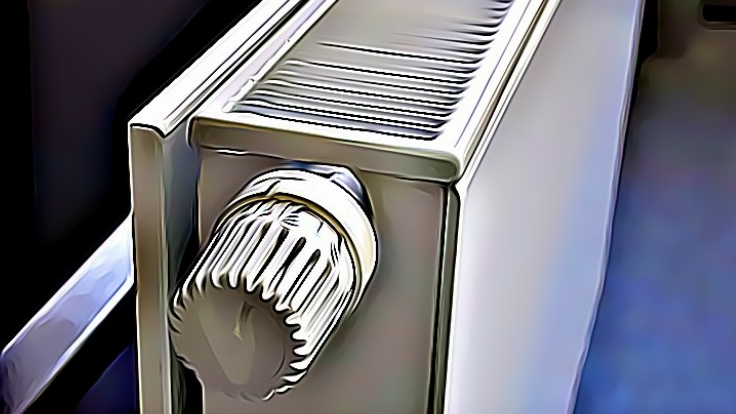And for today I want to share tips and tricks that are quite short and simple, namely about "The Engine's Temperature Regulator: How Automotive Thermostat Works" and here is a summary, The automotive thermostat is a small but critical component that plays a significant role in regulating the temperature of the engine. It ensures that the engine runs at the optimal temperature by regulating the flow of coolant through the engine. In this article, we will take an in-depth look at how the automotive thermostat works and its importance in ensuring the smooth operation of the engine.
What is an Automotive Thermostat?
An automotive thermostat is a temperature-sensitive valve that regulates the flow of coolant through the engine. It is usually located between the engine and the radiator and is designed to open and close in response to changes in temperature. The thermostat controls the flow of coolant by regulating the size of the opening in the valve. When the engine is cold, the thermostat is closed, which prevents the coolant from flowing through the engine. As the engine heats up, the thermostat opens, allowing coolant to flow through the engine and cool it down.
Types of Automotive Thermostats
There are two main types of automotive thermostats: the wax pellet thermostat and the electronic thermostat.
The wax pellet thermostat consists of a wax pellet that is placed inside a metal chamber. As the engine heats up, the wax expands, pushing a rod that opens the thermostat valve. As the engine cools down, the wax contracts, pulling the rod back and closing the valve.
The electronic thermostat, on the other hand, uses an electronic sensor to monitor the temperature of the engine. When the engine reaches a certain temperature, the sensor sends a signal to the thermostat, which opens or closes the valve, depending on the needs of the engine.
How Does the Automotive Thermostat Work?
The automotive thermostat works by regulating the flow of coolant through the engine. The thermostat is designed to open and close in response to changes in temperature. When the engine is cold, the thermostat is closed, which prevents the coolant from flowing through the engine. As the engine heats up, the thermostat opens, allowing coolant to flow through the engine and cool it down.
The thermostat works in conjunction with the radiator to regulate the temperature of the engine. When the engine is running, it generates a lot of heat. The coolant absorbs this heat and carries it to the radiator, where it is cooled down by the air flowing over the radiator. The cooled coolant is then pumped back into the engine to absorb more heat.
The thermostat is designed to maintain a constant temperature range for the engine. The optimal temperature range for most engines is between 195 and 220 degrees Fahrenheit. When the engine is running below this temperature range, the thermostat remains closed, preventing the coolant from flowing through the engine. This helps the engine to warm up quickly, which is important for reducing wear and tear on the engine.
Once the engine reaches the optimal temperature range, the thermostat opens, allowing the coolant to flow through the engine. This helps to regulate the temperature of the engine and prevent it from overheating.
The thermostat is also designed to regulate the flow of coolant through the engine in response to changes in load. When the engine is under heavy load, it generates more heat, and the thermostat opens to allow more coolant to flow through the engine to cool it down. When the engine is running at low load, the thermostat closes, reducing the flow of coolant through the engine and allowing it to heat up more quickly.
Common Problems with Automotive Thermostats
Although the automotive thermostat is a simple component, it can still experience a range of problems. Some of the most common problems with automotive thermostats include:
- Stuck closed: A stuck-closed thermostat will prevent coolant from flowing through the engine, causing it to overheat. This can lead to serious engine damage if not addressed quickly.
- Stuck open: A stuck-open thermostat will allow too much coolant to flow through the engine, causing it to run cooler than optimal. This can result in poor fuel economy, reduced engine performance, and increased emissions.
- Partially open: A partially open thermostat will allow some coolant to flow through the engine, but not enough to regulate the temperature properly. This can lead to erratic engine behavior and poor performance.
- Leaking: A leaking thermostat can allow coolant to escape from the engine, leading to a loss of coolant and potentially causing the engine to overheat.
- Corroded or worn out: Over time, the thermostat can become corroded or worn out, causing it to malfunction. This can result in any of the above problems and should be addressed promptly.
It is important to address any issues with the automotive thermostat as soon as possible to prevent damage to the engine and ensure optimal performance.
So in Conclusion:
The automotive thermostat is a small but critical component of the engine cooling system. It regulates the flow of coolant through the engine, ensuring that it runs at the optimal temperature range for maximum performance and efficiency. There are two main types of automotive thermostats: the wax pellet thermostat and the electronic thermostat. Both types work by opening and closing in response to changes in temperature to regulate the flow of coolant through the engine.
While the automotive thermostat is a relatively simple component, it can still experience a range of problems. It is important to address any issues with the thermostat promptly to prevent damage to the engine and ensure optimal performance.
In summary, the automotive thermostat is a crucial component of the engine cooling system that plays a significant role in maintaining the optimal temperature range for the engine. By understanding how it works and recognizing common problems, car owners can ensure that their engines run smoothly and efficiently for years to come.

